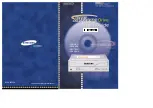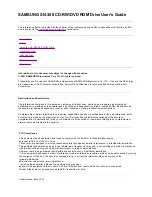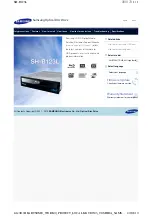
Freecom MediaPlayer II
EN
Precautions
Please read the following in this manual carefully for proper use.
Copyright
• Freecom can not be held responsible for the use of illegal software, audio sources,
video sources etc. The user and/or owner of the Freecom MediaPlayer II is legally
responsible for the content on the device.
Check supported codec
• The Freecom MediaPlayer II may not play back all media files. Please check the codec
type and ensure this is supported by the MediaPlayer II. Please note that possible errors
in the media file or use of unrecognized characters may result in improper playback.
Cautions for USB Device
• Connect the power adapter as well when you connect Freecom MediaPlayer II to a
PC.
• Do not connect the Freecom MediaPlayer II with a USB cable of more than 3 metres
long. Doing so may result in low transfer speeds and/or bad connection.
• We recommend you to use the supplied USB cable by our company.
• If you connect this device to USB 1.1 Host Adapter, the speed is USB 1.1 (Max. 12 Mbps),
so we recommend you to connect to USB 2.0 for full speed of max. 480 Mbps.
Cautions for USB Host
• Not all USB devices may be supported by the USB Host port. Please check the com-
patibility before use or purchase.
Cautions when inserting a HDD
• Only 3.5" SATA type HDD can be used.
• We recommend you to use more than 6 GB HDD. In case you use a harddrive with
less than 6 GB, it may cause data loss.
Cautions when using Network connection
• When the Freecom MediaPlayer II is connected to a PC using the Windows file shar-
ing option, be sure to use the Windows Network sharing function.
• The sharing function may not be functioning properly as a result of errors in Windows
or the user's computer environment. Freecom can not be held responsible for this.
• Depending on user's network performance and computer environment, data transfer
through network may have intermittent data cut-offs.
• Depending on user's wireless network performance and computer environment,
data transfer through wireless network may have intermittent data cut-offs.







































